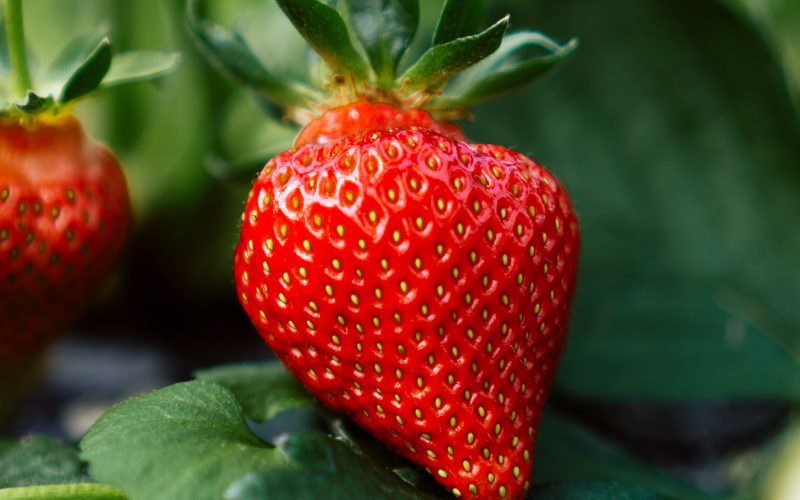Have you ever wondered why some fruits and vegetables taste better than others? Or why certain plants have more nutritional value than their counterparts? The answer lies in the fascinating world of plant genetics. Every living organism, including plants, has a unique genetic makeup that determines its physical characteristics and traits. In this blog post, we’ll unravel the mystery behind how plant genetics affects nutritional value and explore the different types of genes found in plants. So sit back, grab a snack (preferably a nutrient-rich one), and let’s dive into this exciting topic!
The Importance of Plant Genetics
Plant genetics is a critical area of study because it impacts various aspects of human life. From agriculture to medicine, understanding plant genetics unlocks many doors that lead to advancements in these fields.
One of the most critical applications of plant genetics is in agricultural practices. Farmers can use genetic information to breed crops with desirable traits such as higher yields, increased resistance to pests and diseases, and improved quality. This helps ensure food security for communities and nations worldwide.
In addition to agriculture, plant genetics has several healthcare applications. Many medicines are derived from plants, making it essential to understand their genetic makeup fully. Research into plant genes also holds promise for developing new treatments for diseases like cancer, Alzheimer’s disease and diabetes.
Moreover, understanding plant genetics can help us tackle environmental challenges effectively. For example, scientists may be able to develop genetically modified plants that absorb more carbon dioxide than regular plants or remove pollutants from soil and water sources.
Studying plant genetics is crucial if we want to continue advancing as a society while preserving our planet’s natural resources adequately.
How Plant Genetics Affects Nutritional Value
Plant genetics play a vital role in determining the nutritional value of plants. The genetic makeup of a plant can determine how much protein, carbohydrates, vitamins, and minerals it produces. The nutritional composition of crops varies widely depending on their genetic traits.
For instance, some plant varieties may be genetically programmed to produce high levels of antioxidants that protect against chronic diseases such as cancer and heart disease. Other plant species may have genes that enable them to resist pests or grow faster under certain conditions.
Additionally, studies have shown that changes in environmental factors like temperature and soil quality can alter the expression of genes responsible for nutrient production in plants. This means that even if two identical plants are grown under different conditions, they will differ significantly in terms of their nutritional content due to variations in gene expression.
The modern agricultural industry has made significant strides towards breeding new crop varieties with enhanced nutritional profiles through selective breeding techniques such as hybridization and mutation breeding. Crop improvement programs aim to develop crops with higher yields and better resistance to environmental stressors while also improving their overall nutrition profile.
Understanding how plant genetics affects the nutritional value is crucial for developing more nutritious food sources for our growing population while also reducing our dependence on synthetic fertilizers and pesticides.
The Different Types of Plant Genes
Plants have a complex genetic makeup, just like humans and animals. The difference is that plants have unique genes that help them adapt to their environment. These genes are responsible for different traits such as growth rate, disease resistance, and nutritional content.
One type of plant gene is the regulatory gene which controls the expression of other genes in response to environmental changes. For example, when a plant is exposed to low light conditions, certain regulatory genes will activate photosynthesis-related genes so that the plant can produce its own energy.
Another type of gene found in plants is transporters which regulate nutrient uptake and allocation within the plant’s cells. Some transporter genes also play an important role in controlling stress responses by regulating water uptake during drought conditions.
Structural genes are responsible for producing proteins that make up various cellular components such as enzymes and cell walls. These proteins determine physical characteristics of the plant such as texture and color.
Understanding these different types of plant genes allows scientists to manipulate them through techniques like genetic engineering or selective breeding to enhance desirable traits in crops. It’s fascinating how much we can learn about our food sources by studying their genetics!
How to Change the Gene sequencing of a Plant
To change the gene sequencing of a plant, scientists use genetic engineering techniques. This involves inserting or removing specific genes from the plant’s DNA sequence.
One method is to introduce new genes into the plant’s genome through a process called transformation. This can be done using specialized tools such as gene guns or by infecting plants with engineered viruses.
Another approach is to use CRISPR-Cas9, a cutting-edge tool that allows researchers to precisely edit specific DNA sequences within the plant’s genome. With this technique, scientists can make targeted changes in the genetic code of a particular crop variety and create new varieties with superior nutritional profiles.
However, there are some concerns about altering plant genetics for human consumption. Some argue that genetically modified crops may have unintended consequences on human health and the environment.
To address these concerns, many countries have established regulations governing how genetically modified organisms (GMOs) are developed and used in agriculture. These regulations aim to ensure that GMOs are safe for humans and do not harm natural ecosystems.
Changing plant genetics has great potential for improving food security and increasing nutritional value but must be approached responsibly and ethically.
Pros and Cons of Altering Plant Genes
When it comes to altering plant genes, there are both benefits and drawbacks. On one hand, genetic modification can lead to plants with increased resistance to pests and diseases or a longer shelf life. This can result in higher crop yields and more affordable produce for consumers.
However, there are also concerns about the safety of genetically modified organisms (GMOs). Some worry that these altered plants could have negative effects on human health or the environment. Additionally, GMO crops may not always perform as intended – for example, some pests have developed resistance to pesticides produced by genetically engineered plants.
Another drawback is that GMOs often require large corporations to invest significant amounts of money into research and development. This means that smaller farmers may struggle to compete if they cannot afford such technology.
It’s important for scientists, policymakers and consumers alike to carefully consider both the potential benefits and risks associated with genetic modification before making any decisions.
Conclusion
Plant genetics plays a vital role in determining the nutritional value of plants. Different types of genes are responsible for different aspects of the plant’s growth and development, affecting its nutrient content, taste and appearance. Scientists have developed methods to modify gene sequencing in plants to enhance their nutritional value, but this comes with both advantages and disadvantages that must be weighed carefully.
Understanding how plant genetics affects nutrition can help us make informed decisions about what we eat and how we grow our food. By working together to develop sustainable farming practices that prioritize genetic diversity and natural selection over genetically modified crops, we can promote healthier diets while also supporting biodiversity conservation efforts around the world.












